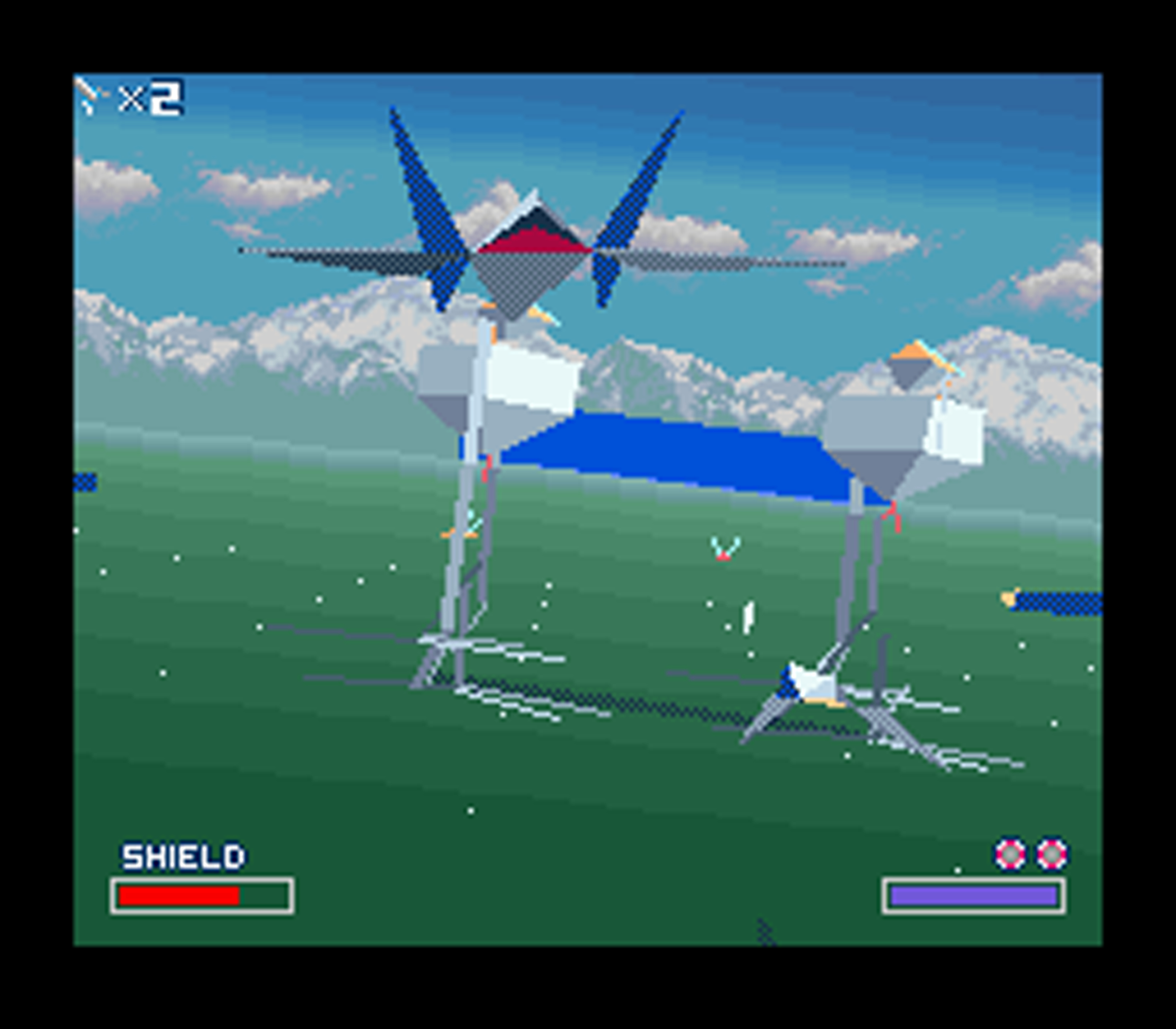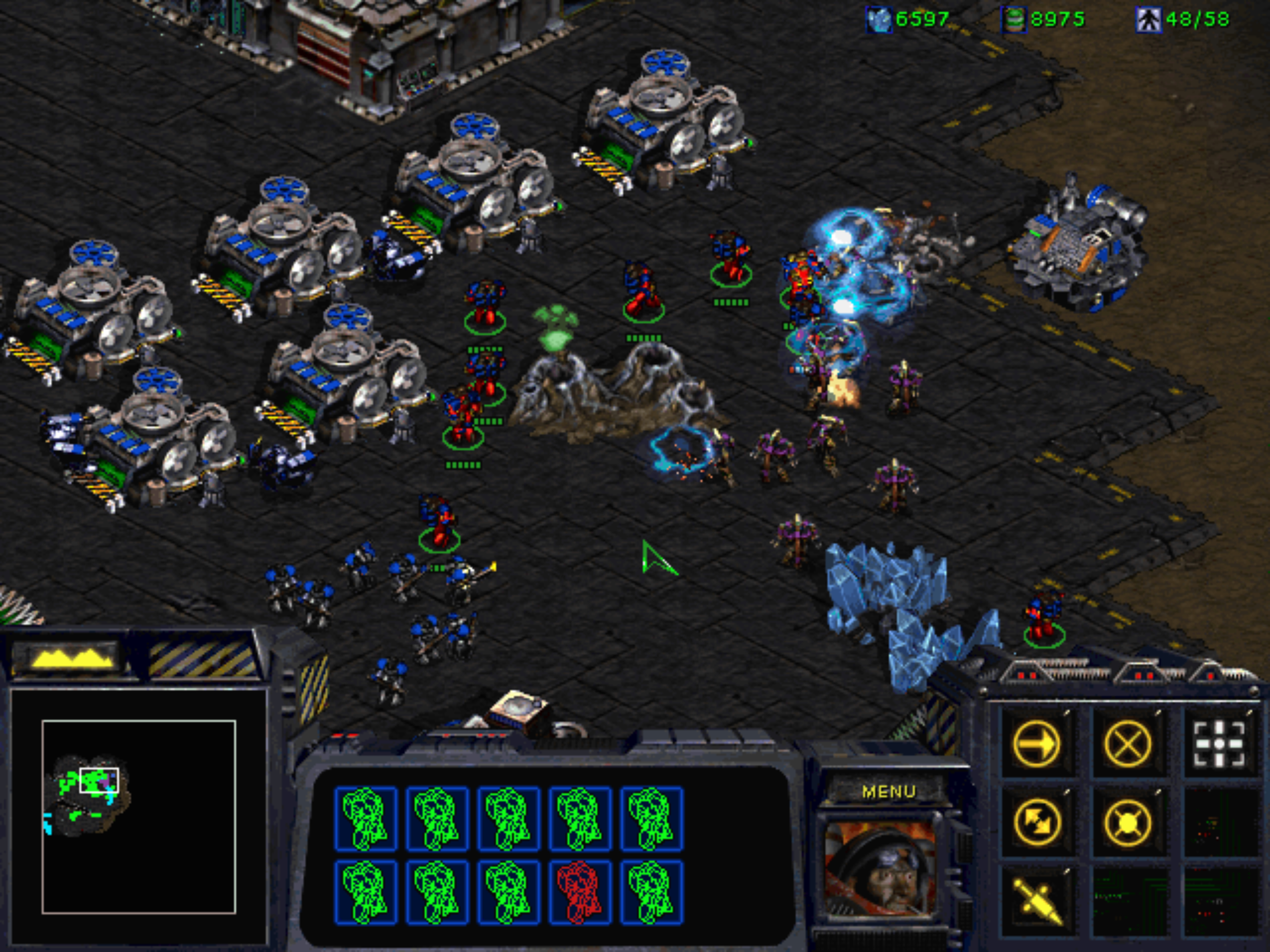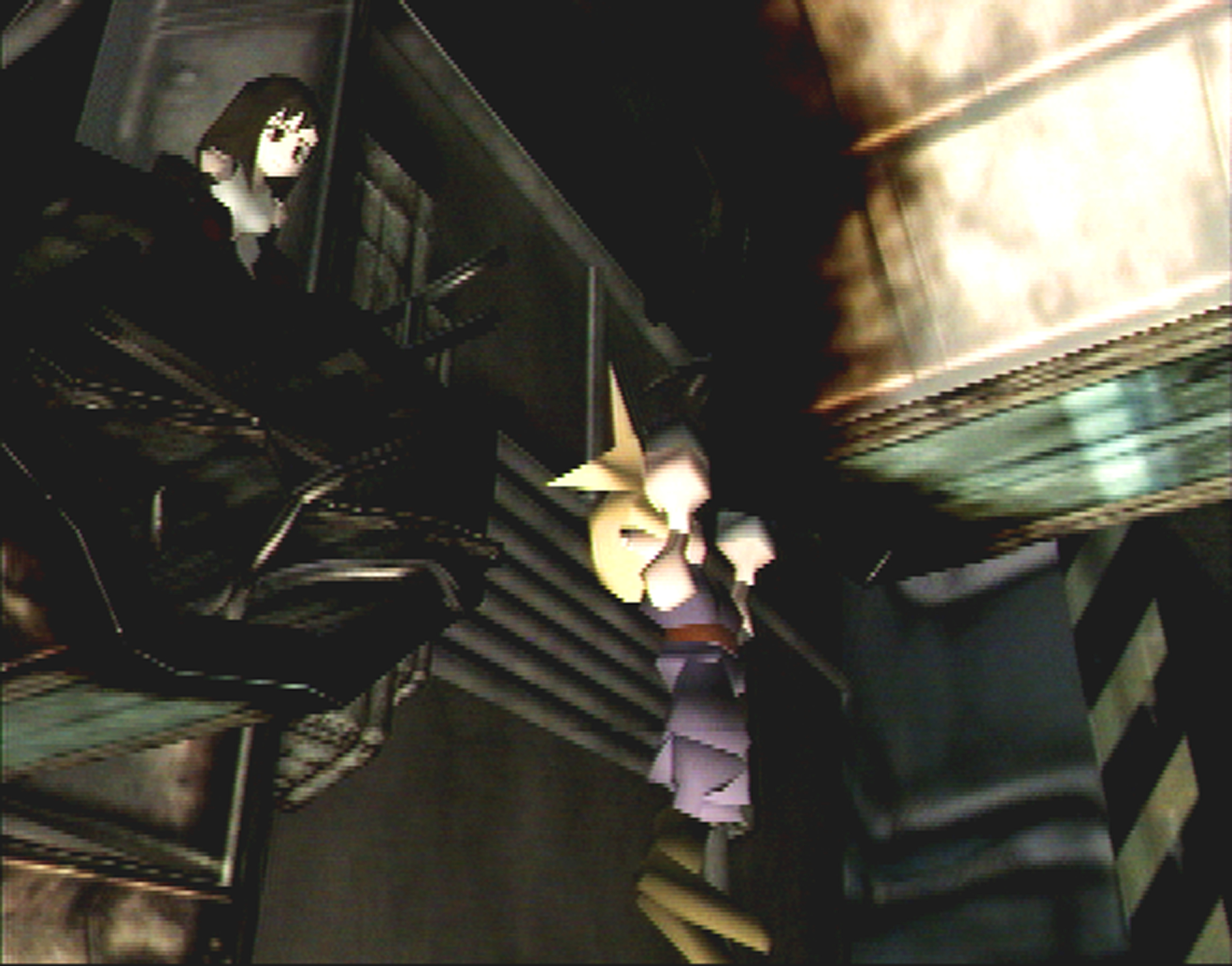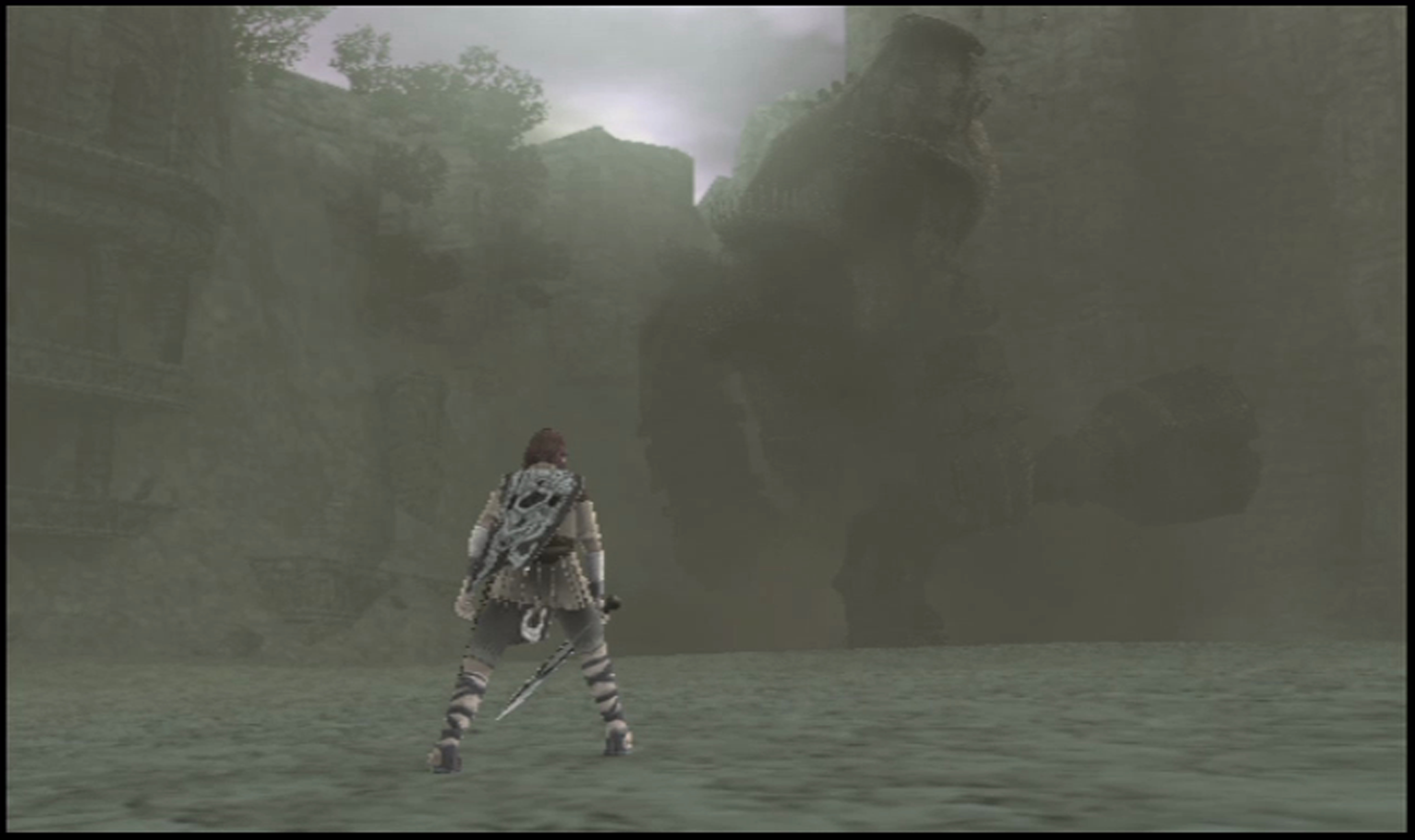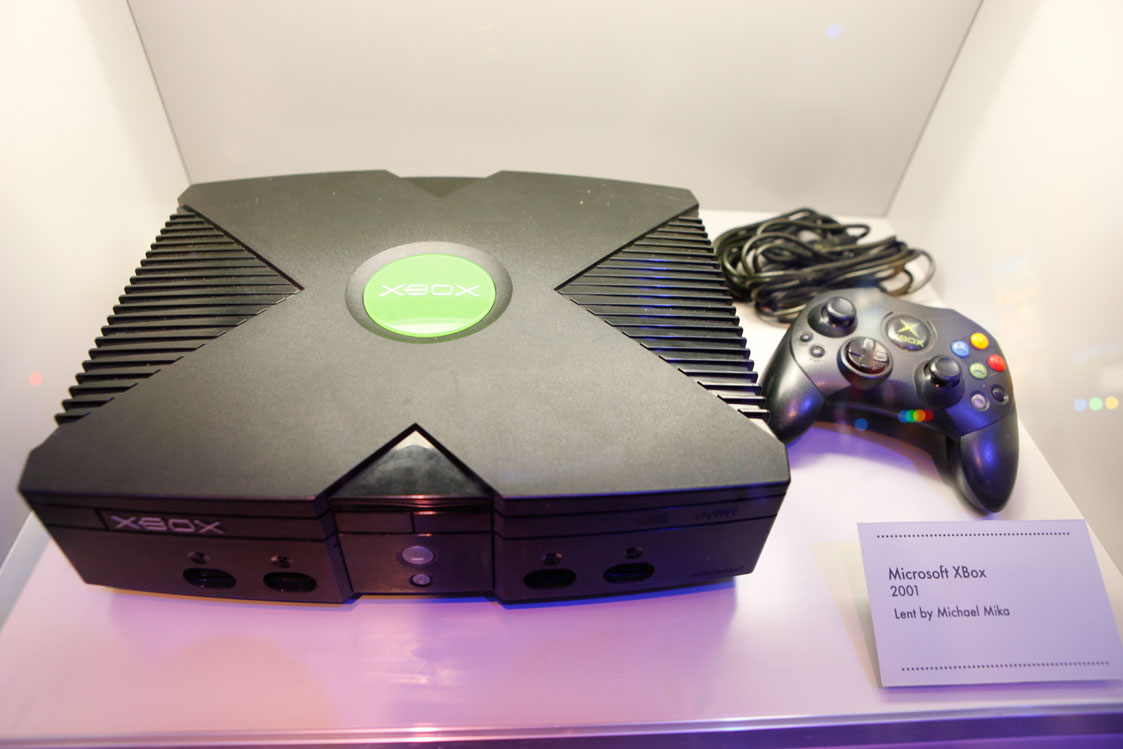In Pictures: The Art Of Video Games @ The Smithsonian
For decades, video games were seen by many strictly as entertainment. However, a new exhibit presented by the Smithsonian American Art Museum compels us to look at them as part of our culture. We walk through the 40-year evolution of games and platforms.
The Four Top Sega Genesis Titles
Sega Genesis: 1988, Sega
Sega’s most successful console, the Genesis, sold over 37 million units during its lifetime. The Genesis competed with Nintendo's Super NES, and the two became the early '90s' most dominant platforms.
The Four Genre Winners
Tactics
Dune II: The Battle for Arrakis: 1993, Westwood Studios. The developer that would eventually go on to make the venerable Command & Conquer series created Dune II for the PC in 1992, and ported it to the Genesis in 1993. This game paved the way for many attributes found in real-time strategy games today. It was the first to implement “fog of war,” which hid portions of the map until they were explored. The tiling of buildings and wearing-down of structures also became an often reproduced characteristic of RTS titles. In addition, a top-down view had the added benefit of reducing the need for detailed graphics and animations. Designers could instead focus on better AI and other game elements.
Action
Earthworm Jim: 1994, Shiny Entertainment/Playmates Interactive
Get Tom's Hardware's best news and in-depth reviews, straight to your inbox.
Target
Gunstar Heroes: 1993, Treasure
Adventure
Phantasy Star IV: 1994, SEGA
Photo courtesy of the Smithsonian American Art Museum, Westwood Studios, and © Electronic Arts, Inc.
The Four Top SNES Games
Super Nintendo Entertainment System: 1990, Nintendo
The SNES was the best-selling console of the 16-bit era, and Nintendo moved more than 49 million units. It was even popular well into the 32-bit era, when it was technically outmatched by newer platforms.
The Four Genre Winners
Target
Star Fox: 1993, Nintendo/Argonaut. The SNES, though far superior to the NES technically, paled in comparison to the technologies emerging for PCs. The designers of Star Fox realized this and implemented a brilliant solution: they developed a RISC co-processor (Super FX) to accelerate graphics processing that was embedded into each game cartridge. This allowed Nintendo and Argonaut to create a 3D world in Star Fox that the SNES alone could not achieve.
In Star Fox, General Pepper leads the Corneria defense force Star Fox team in defeating Emperor Andross to save the Lylat system. Unfortunately, Fox did not have the help of barrel rolls until Star Fox 64.
Action
Super Mario World: 1991, Nintendo
Adventure
The Legend of Zelda: A Link to the Past: 1992, Nintendo
Tactics
SimCity: 1991, Maxis/Nintendo
Photo courtesy of the Smithsonian American Art Museum and Nintendo of America, Inc.
The Four Top Nintendo 64 Games
Nintendo 64: 1996, Nintendo
The Nintendo 64 was named for its NEC VR4300 64-bit CPU, selling more than 32 million units over the course of its life cycle. It was the last fifth-generation console to be released (following Sega's Saturn and Sony's PlayStation). It was also arguably the most technologically advanced, though programming for the Nintendo 64 was often described as very difficult.
The Four Genre Winners
Action
Super Mario 64: 1996, Nintedo. A launch title for the Nintendo 64, Super Mario 64 presented gamers with a new 3D world where they controlled Mario unlike any game featuring the plumber preceding it. The Nintendo 64 controller allowed players to guide Mario with incredible precision, and the interactive audio effect and musical score added to the game's immersion. Shigeru Miyamoto created one of the most popular Mario-themed games in history with his Super Mario 64 effort.
Target
GoldenEye 007: 1997, Rare
Adventure
The Legend of Zelda: The Ocarina of Time: 1998, Nintendo
Tactics
Worms Armageddon: 2000, Team 17
Photo courtesy of the Smithsonian American Art Museum and Nintendo of America, Inc.
The Four Top DOS/Windows Games
DOS/Windows: 1981, Microsoft
Originally released in 1981, MS-DOS became a popular operating system for PCs. Windows was first released in 1985, and has dominated the home PC market ever since.
The Four Genre Winners
Tactics
StarCraft: 1998, Blizzard Entertainment. One of the most popular RTS games of all time, StarCraft thrust the player into a galaxy created by Chris Metzen and James Phinney with three races at war: the human Terran and two alien species, the Protoss and the Zerg. Introduced natively for the PC, StarCraft was graphically superior in many aspects to titles that came before. The characters, buildings, and environments were very detailed. In some cases, the architecture was even animated.
Action
Doom II: 1994, id Software
Target
Diablo II: 2000, Blizzard Entertainment
Adventure
Fallout: 1997, Interplay
Photo courtesy of the Smithsonian American Art Museum and © Blizzard Entertainment, Inc.
The Four Top PlayStation Games
PlayStation: 1994, Sony Computer Entertainment
Sony's PlayStation (together with the redesigned PSone) was the first console to ship over 100 million units. That's a testament to its immense popularity. Its lifespan exceeded nine years.
The Four Genre Winners
Adventure
Final Fantasy VII: 1997, Square. FF7 is a beloved RPG that leaned heavily on a compelling storyline, beautiful visuals/models, and a dramatic musical score. Game designer Hironobu Sakaguchi sought to create a world that explored ecological issues, along with strong themes, such as the balance of progress and appropriation of natural resources. FF7 existed in a made-up world, but it very much mirrored our own. Because of its complex story, three-dimensional cut scenes, and beautiful environments, FF7 became one of the most popular RPGs in history.
Action
Metal Gear Solid: 1998, Konami
Target
Einhander: 1998, Square
Tactics
Final Fantasy Tactics: 1998, Square
Photo courtesy of the Smithsonian American Art Museum and © Square Enix Co., Ltd.
The Four Top Sega Saturn Games
Sega Saturn: 1994, Sega
Sega's Saturn was released in 1994. It gained a large following in Japan, but failed to generate as much attention in North America. Worldwide sales exceed 9 million units, with only 2 million sold here in the U.S. and 6 million in Japan.
The Four Genre Winners
Adventure
Panzer Dragoon Saga: 1998, Team Andromeda. This was the last role-playing (RPG) game released on Sega's Saturn, and it was different from other Panzer Dragoon titles in the series, which were mainly rail shooters.
The protagonist, Edge, is a soldier protecting an excavation site in a post-apocalyptic world. He discovers the body of a young woman, but is attacked by Imperial troops, who subsequently kidnap the girl. Edge is knocked off of a cliff and saved by a dragon that accompanies him on his adventure to save the girl.
The game featured extensive cut scenes, full-motion video, and new advances in 3D game development and art direction.
Action
Tomb Raider: 1996, Core Design
Target
Panzer Dragoon II: Zwei: 1996, Team Andromeda
Tactics
SimCity 2000: 1995, Maxis
Photo courtesy of the Smithsonian American Art Museum and © Sega Corporation.
The Four Top Sega Dreamcast Games
Sega Dreamcast: 1998, Sega
Sega's Dreamcast was the first sixth-generation console, which launched back in 1998. The Dreamcast sold 10 million units worldwide, but ultimately, it was much less popular than Sony’s PlayStation 2 and other sixth-gen systems.
The Four Genre Winners
Target
Rez: 2001, United Game Artists. Rez was inspired by Wassily Kandinsky, a Russian painter, and attempted to depict what a computer system would resemble. The player controls an avatar that is injected into the system to defeat a self-aware AI that attempts to shut down a global network. The abstract computer world, called the K-Project, is manifested in rays of light and elegant shapes representing various mathematical formulas. The musical score also reacts to advancement in the game; as the player eliminates enemies and progresses further, Rez's score becomes more complex, and the controller vibrates in unison.
Other Winners
Action
Sonic Adventure: 1999, Sonic Team
Adventure
Shenmue: 2000, Sega
Tactics
ChuChu Rocket!: 2000, Sonic Team
Photo: Rez, Tetsuya Mizuguchi, producer; Jun Kobayashi, director; Katsumi Yokota, art director and lead artist, Sega Dreamcast, 2001, © Sega. All Rights Reserved.
The Four Top PlayStation 2 Games
PlayStation 2: 2000, Sony Computer Entertainment
Sony's PlayStation 2 is the best-selling console of all time; it passed the 150 million-unit mark back in 2011. Sony does not plan to stop production of the PlayStation 2 until demand tapers off. For now, it's still selling well.
The Four Genre Winners
Action
Shadow of the Colossus: 2005, Team Ico. Shadow of the Colossus is an interesting puzzle game with a simple goal: the protagonist, Wander, is trying to revive the body and spirit of his girlfriend, Mono. To accomplish this, a voice tells Wander to kill colossi, giant creatures that roam the land. Whereas most puzzle games revolve around dropping blocks to create lines, like Tetris, or matching colored blocks together, like Bust-a-Move, the colossi in Shadow of the Colossus are the actual puzzle.
The entire world is barren except for the colossi, Wander, and his horse Agro. This evokes a great sense of isolation. Each colossus is wonderfully presented, typically in the shape of some animal, and they move and react fluently with the environment. When a colossus falls dead at the player’s feet, there is a tremendous sense of loss as the area is returned to the utter emptiness of the landscape surrounding it.
Target
Gradius V: 2004, Treasure
Adventure
Okami: 2006, Clover Studios
Tactics
Metal Gear Solid 2: Sons of Liberty: 2001, Konami
Photo: Shadow of the Colossus, Fumito Ueda, director and game design, PlayStation 2, 2005, Sony Computer Entertainment America LLC.
The Four Top Xbox Games
Xbox: 2001, Microsoft
Xbox, Microsoft’s first gaming console, was a force to be reckoned with. It sold more than 24 million units and achieved wide adoption in many markets. Japan was the exception, where Sony's PlayStation 2 was more popular.
The Four Genre Winners
Action
Halo 2: 2004, Bungie. The original Halo defined Xbox, and Halo 2 added to its story, while simultaneously improving on almost every aspect of the original. The protagonist, Master Chief, is a super soldier with no real discernible identity, allowing the player to instead project his or her own. This adds a more personal connection as you venture through numerous worlds exploring themes of empire-building, religion, betrayal, and assimilation. Ultimately, Halo 2 is a wonderful game with great balance between story, gameplay, and an immersive musical score, in addition to its online multi-player experience.
Target
Panzer Dragoon Orta: 2003, Smilebit
Adventure
Fable: 2004, Lionhead Studios
Tactics
Tom Clancy’s Splinter Cell: 2002, Ubisoft Montreal
Photo: © Conway Yen
The Four Top GameCube Games
Nintendo GameCube: 2001, Nintendo
The GameCube was a sixth-generation console introduced by Nintendo, and it was the company's first to employ optical discs. It sold over 21 million units, but did not gain as much traction as the PlayStation 2 or Xbox.
The Four Genre Winners
Tactics
Pikmin 2: 2004, Nintendo. The inspiration for the Pikmin games came from Shigeru Miyamoto’s garden. Miyamoto observed a group of ants working together and incorporated the idea into Pikmin, where the protagonist, Captain Olimar, gardens using plant-like Pikmin to help him on his quest to extract artifacts. The tiny Pikmin have a variety of skills, and Olimar can evolve them by replanting.
It's easy to get attached to the small creatures during the course of the game. Consequently, the title is very rewarding, encouraging an appreciation for all creatures, particularly the ones smaller than us
Action
Metroid Prime 2: Echoes: 2004, Retro Studios
Target
Star Fox: Assault: 2005, Namco
Adventure
The Legend of Zelda: The Wind Waker: 2003, Nintendo
Photo courtesy of the Smithsonian American Art Museum and Nintendo of America, Inc.
-
Nintendo Maniac 64 Star Fox Assult? Seriously? Really should have put Metroid Prime under "Target" and Smash Bros. Melee under "Action" instead.Reply
And no Sonic platformer for the Genesis?! What about BLAST PROCESSING?!
EDIT: Oh, no wonder. Looking at the nominees, Melee never even got nominated (wat), and the only Sonic platformer nominated was Sonic CD - the one most people never got to play.
If they were smart, they'd re-evaluate the consoles that are 2001 and newer in say, 10-20 years since it'll be considerably more obvious which games have stood the test of time as notable. This is especially true for the current generation systems which still have some big titles coming out (Xenoblade in particular comes to mind). -
silverblue Very happy to see the Master System in there (my first console), but even happier to see three Panzer Dragoon titles, of which I am currently replaying Saga (my favourite game ever).Reply -
Super_Nova Great to see Gradius V, Panzer Dragoon series, Rez and Spy vs Spy (loved those games) and I agree they withstood the test of time very well but where are f.i. Radiant Silvergun and Nights in to dreams (Saturn)? I also miss something about arcade games throughout the years.Reply -
shin0bi272 no turbografix 16? tisk tiskReply
Also Im pretty sure mass effect was a big game on pc not just friggin minecraft or flow -
spookyman buzznutSpy vs spy?????Reply
The reason Star Fox was chosen because it was an actual 3D game on SNES, which at the time had just a simple 16bit processor. It pushed the limits of the system.
Yes I agree that missing Sonic for Sega Genesis was not good choice. Though Earthworm Jim was very popular back then.
-
jaquith ...Crap I'm getting old! :( The scary thing is I played on many of those consoles and games and now they're in a museum!Reply -
allawash Anybody who owned a Saturn and played Guardian Heroes knows it should have been listed for action on that console. Hands down the best sides scrolling action game I ever played.Reply

